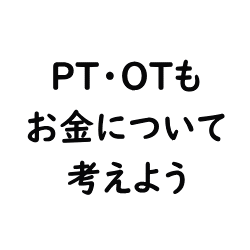目次
ウォーキングよりもランニングの方が関節への負担が小さいって嘘?
われわれ理学療法士・作業療法士は昔から関節への負担を軽減させるためにさまざまな指導を行ってきました.
下肢の変形性関節症例や人工関節置換術後の症例には関節への負担を軽減させるためにランニングは行わないように指導することが多いと思います.
しかしながらとんでもないデータが公表されました.
今回はウォーキングよりもランニングの方が股関節への負担が小さいのかどうかを明らかにした報告をご紹介させていただきます.

今回ご紹介する論文
Med Sci Sports Exerc. 2018 Nov;50(11):2301-2310. doi: 10.1249/MSS.0000000000001689.
Is Running Better than Walking for Reducing Hip Joint Loads?
Schache AG, Lin YC, Crossley K, Pandy MG.
今回ご紹介する論文は2018年に掲載された比較的新しい論文です.
研究の目的
Knowledge of hip biomechanics during locomotion is necessary for designing optimal rehabilitation programs for hip-related conditions. The purpose of this study was to: 1) determine how lower-limb muscle contributions to the hip contact force (HCF) differed between walking and running; and 2) compare both absolute and per-unit-distance (PUD) loads at the hip during walking and running.
歩行中の股関節のバイオメカニクスに関する知識は股関節関連疾患のリハビリテーションプログラムを立案する上で非常に重要となります.
この研究では,下肢筋の股関節負荷への貢献をウォーキングとランニングで比較し,ウォーキング・ランニング間で1歩行(走行)周期あたりの関節負荷を比較することを目的としております.
研究の方法
Kinematic and ground reaction force data were captured from eight healthy participants during overground walking and running at various steady-state speeds (walking: 1.50 ± 0.11 m·s and 1.98 ± 0.03 m·s; running: 2.15 ± 0.18 m·s and 3.47 ± 0.11 m·s). A three-dimensional musculoskeletal model was used to calculate the HCF as well as lower-limb muscular contributions to the HCF in each direction (posterior-anterior; inferior-superior; lateral-medial). The impulse of the resultant HCF was calculated as well as the PUD impulse (BW·s·m) and PUD force (BW·m).
方法ですが8例の健常例を対象としてウォーキング中およびランニング中の運動力学的データおよび床反力データをさまざまな速度(ウォーキング1.5m/s・2.0m/s,ランニング2.1m/s・3.5m/s)で測定しております.
関節負荷の計算には3次元筋骨格系モデルを用いて下肢筋が関節負荷へ与える影響を明らかにしております.
研究の結果
For both walking and running, HCF magnitude was greater during stance than swing and was largest in the inferior-superior direction and smallest in the posterior-anterior direction. Gluteus medius, iliopsoas, and gluteus maximus generated the largest contributions to the HCF during stance, whereas iliopsoas and hamstrings generated the largest contributions during swing. When comparing all locomotion conditions, the impulse of the resultant HCF was smallest for running at 2.15 m·s with an average magnitude of 2.14 ± 0.31 BW·s, whereas the PUD impulse and force were smallest for running at 3.47 m·s with average magnitudes of 0.95 ± 0.18 BW·s·m and 1.25 ± 0.24 BW·m, respectively.
ウォーキング・ランニングいずれも股関節負荷の大きさは遊脚期に比較して立脚期で有意に大きく,上下方向の関節負荷が最も大きく前後方向の関節負荷が最も小さい結果でありました.
中殿筋,腸腰筋,大殿筋が最も立脚時における股関節負荷の軽減に貢献しており,腸腰筋・ハムストリングスが遊脚時の関節負荷を発生させておりました.
移動形態(ウォーキング・ランニング)間の比較では,股関節負荷はウォーキングよりもランニングで小さいといった結果でした.
研究の結論
Hip PUD loads were lower for running at 3.47 m·s compared with all other locomotion conditions because of a greater distance travelled per stride (PUD impulse) or a shorter stride duration combined with a greater distance travelled per stride (PUD force).
この研究から股関節負荷はウォーキングに比較してランニングで小さいことが明らかとなりました.
これはランニングにおける立脚時間が短いことに起因するものだと結論付けられております.
今回はウォーキングよりもランニングの方が股関節への負担が小さいのかどうかを明らかにした報告をご紹介させていただきました.
驚きの結果ですが,考えてみると関節に負荷の加わる時間が短いのでそれだけ関節負荷が小さいということになります.
ランニングには当然ながらさまざまなリスクが伴いますので,この結果をもとにランニングを指導すればよいということではないと思いますが,立脚時間を短縮させることが関節負荷を軽減させる1つのポイントになりそうですね.







コメント